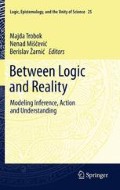Abstract
Identity criteria are used to confer ontological respectability: Only entities with clearly determined identity criteria are ontologically acceptable. From a logical point of view, identity criteria should mirror the identity relation in being reflexive, symmetrical, and transitive. However, this logical constraint is only rarely met. More precisely, in some cases, the relation representing the identity condition fails to be transitive. We consider the proposals given so far to give logical adequacy to inadequate identity conditions. We focus on the most refined proposal and expand its formal framework by taking into account two further aspects that we consider essential in the application of identity criteria to obtain logical adequacy: contexts and granular levels.
Access this chapter
Tax calculation will be finalised at checkout
Purchases are for personal use only
Notes
- 1.
Brand [1] has given a different characterization for the logical form of ICs in terms of second order modal logic: \(\exists F \forall x \forall y\)(if x and y are ϕs then \(\square (x = y \leftrightarrow F(x,y)))\)
- 2.
It is debatable if there is a real distinction between two-level and one-level ICs . J. Lowe has suggested that a two-level IC can be recast as one-level. For example (O) can be so reformulated:
$$\forall x \forall y((Direction(x) \land Direction(y)) \rightarrow (x = y \leftrightarrow \exists w \exists z (L(w) \land L(z) \land Of(x, w) \land Of(y, z) \land P(w,z))))$$where “Direction” is “to be a direction”, “L” “to be a line”, and “Of” “to be of” (Lowe discusses one-level and two-level identity criteria in [10, 11]).
- 3.
If you prefer to maintain Williamson’s approaches, instead of R ± you can get R + or R −.
- 4.
Note that the domain \({\mathcal D}\) remains fixed in all the granular structures, and so the set of contexts O. The relation R also is the same—for example, perceptual indiscriminability—but its interpretation can differ along the grain size of the structure, as we see in the example.
References
Brand, Myles. 1977. “Identity Conditions for Events.” American Philosophical Quarterly 14:329–37.
Carrara, Massimiliano, and Pierdaniele Giaretta. 2001. “Identity Criteria and Sortal Concepts.” Proceedings of The International Conference on Formal Ontology in Information Systems (FOIS 01), 234–43. Amsterdam: IOS Press.
Davidson, Donald. 1980. Essays on Action and Events. Oxford: Clarendon Press.
De Clercq, Rafael, and Leon Horsten. 2005. “Closer.” Synthese 146:371–93.
Devitt, Michael. 1991. Realism and Truth, 2nd edition. Oxford: Basil Blackwell.
Frege, Gottlob. 1884. Die Grundlagen der Arithmetik: eine logisch-mathematische Untersuchung über den Begriff der Zahl. Breslau: Köbner.
Hardin, Larry. 1988. “Phenomenal Colors and Sorites.” Nous 22:213–34.
Linnebo, Øystein. 2005. “To Be Is to Be an F.” Dialectica 59:201–22.
Lombard, Lawrence Brian. 1986. Events: A metaphysical Study. London: Routledge & Kegan Paul Books.
Lowe, Jonathan. 1991. “One-Level Versus Two-Level Identity Criteria.” Analysis 51:192–94.
Lowe, Jonathan. 1997. “Objects and Identity Criteria.” In A Companion to the Philosophy of Language, edited by Bob Hale and Crispin Wright, 613–33. Oxford: Basil Blackwell.
Quine, Willard Van Orman. 1953. From a Logical Point of View. Cambridge, MA: Harvard University Press.
Williamson, Timothy. 1986. “Criteria of Identity and the Axiom of Choice.” The Journal of Philosophy 83:380–94.
Williamson, Timothy. 1990. Identity and Discrimination. Oxford: Basil Blackwell.
Author information
Authors and Affiliations
Corresponding author
Editor information
Editors and Affiliations
Rights and permissions
Copyright information
© 2012 Springer Science+Business Media B.V.
About this chapter
Cite this chapter
Carrara, M., Gaio, S. (2012). Towards a Formal Account of Identity Criteria. In: Trobok, M., Miščević, N., Žarnić, B. (eds) Between Logic and Reality. Logic, Epistemology, and the Unity of Science, vol 25. Springer, Dordrecht. https://doi.org/10.1007/978-94-007-2390-0_12
Download citation
DOI: https://doi.org/10.1007/978-94-007-2390-0_12
Published:
Publisher Name: Springer, Dordrecht
Print ISBN: 978-94-007-2389-4
Online ISBN: 978-94-007-2390-0
eBook Packages: Humanities, Social Sciences and LawPhilosophy and Religion (R0)

